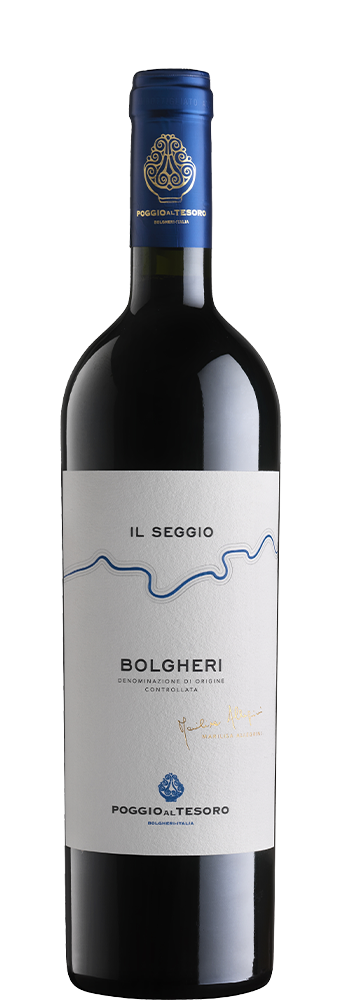Il Seggio

Il Seggio
Bolgheri Rosso D.O.C.
Merlot 50%, Cabernet Sauvignon 20%, Cabernet Franc 20%, Petit Verdot 10%
The Seggio river is the largest watercourse in the municipality of Castagneto Carducci. Its source is up in the metalliferous hills of Sassetta, an area that was already well known in the Etruscan period, which is extremely rich in underground deposits of ferrous minerals. It cuts across the entire area of Bolgheri and its alluvial debris enriches the characteristic clay soils with precious large pebbles, thus ensuring excellent drainage of the soil. This Bolgheri Rosso is produced with typical grape varieties, carefully harvested and vinified to ensure density and concentration but also to create a very fresh and easy-drinking style of wine.
Climate Trend
Climatic conditions in Bolgheri were quite well-balanced. Apart from a few cold nights at the end of March when the temperature dropped below freezing, the rest of spring was beautiful and sunny with some rain at the right moments to ensure proper vegetative growth with uniform flowering and fruit set. There were very few rainy days in June, except for some rainfall during the first week which prevented the vines from experiencing water stress, something that should be avoided during this stage of ripening. Towards the end of August, summer temperatures gradually began to drop after some rainfall, making it possible to begin the harvest. September was sunny and warm with a wide range of temperatures, typical for the area, for the rest of the harvest.

-
-
grape varieties
Merlot 50%, Cabernet Sauvignon 20%, Cabernet Franc 20%, Petit Verdot 10%
-
-
vineyard location
Via Bolgherese, Cabernet Sauvignon (3.00 ha – 7.40 ac); Le Sondraie, Merlot, Cabernet Franc, Cabernet Sauvignon and Petit Verdot (12,00 ha – 29.65 ac)
-
-
capacities
375 ml • 750 ml • 1,5 L • 3 L
-
-
vinification
Grapes are de-stemmed then soft pressed to partially rupture of the berries
ageing
15 months in 225 litres French oak barriques (30% new, 70% second use)
fermentation
In temperature controlled stainless steel tanks
malolactic fermentation
Carried out naturally in barriques in November